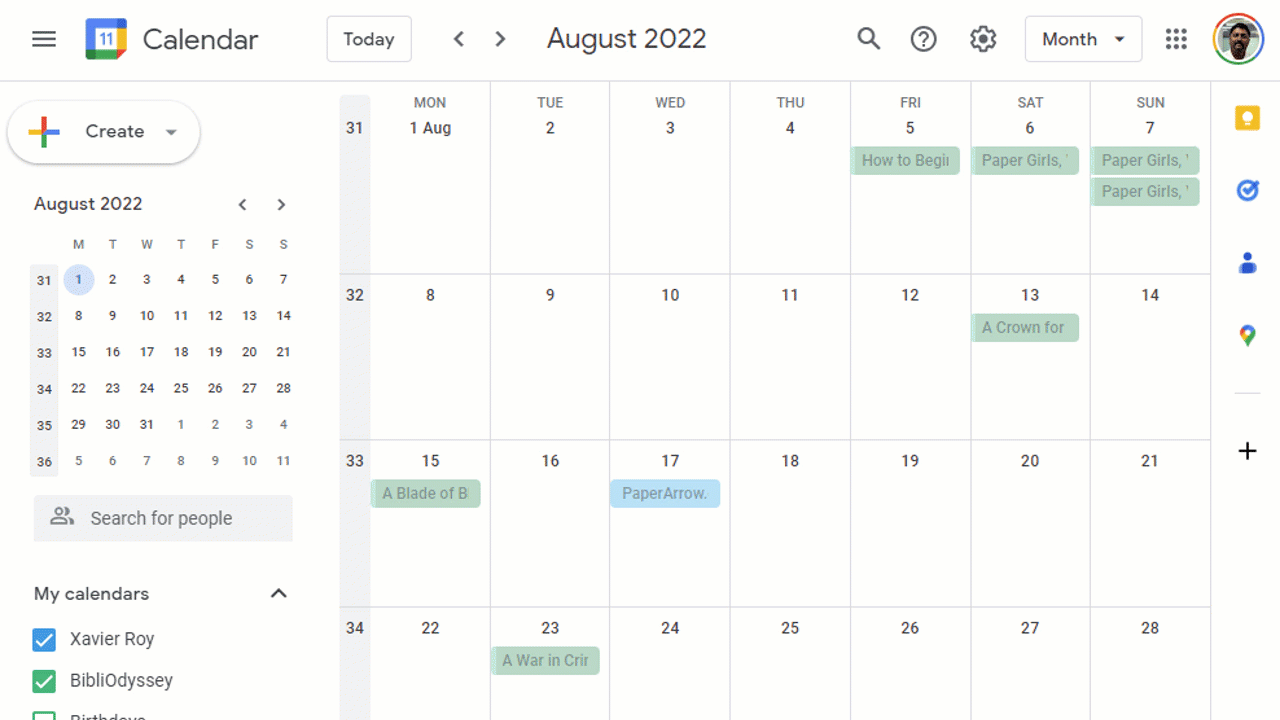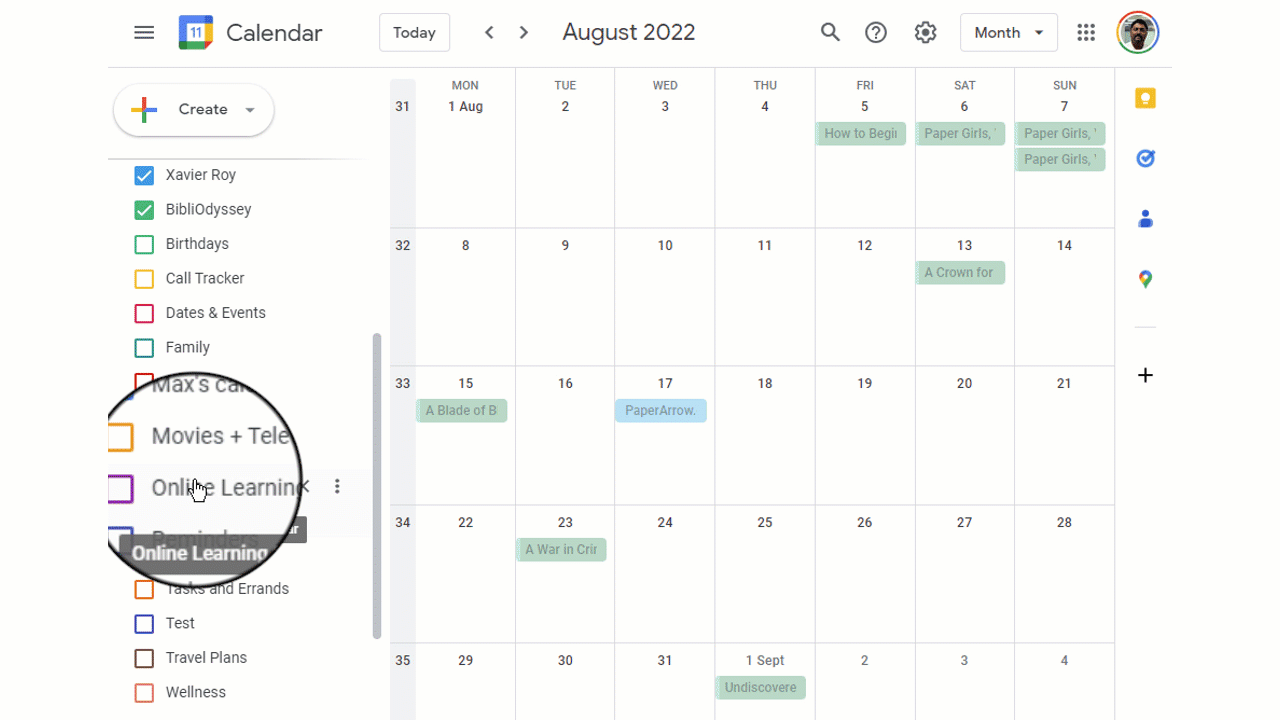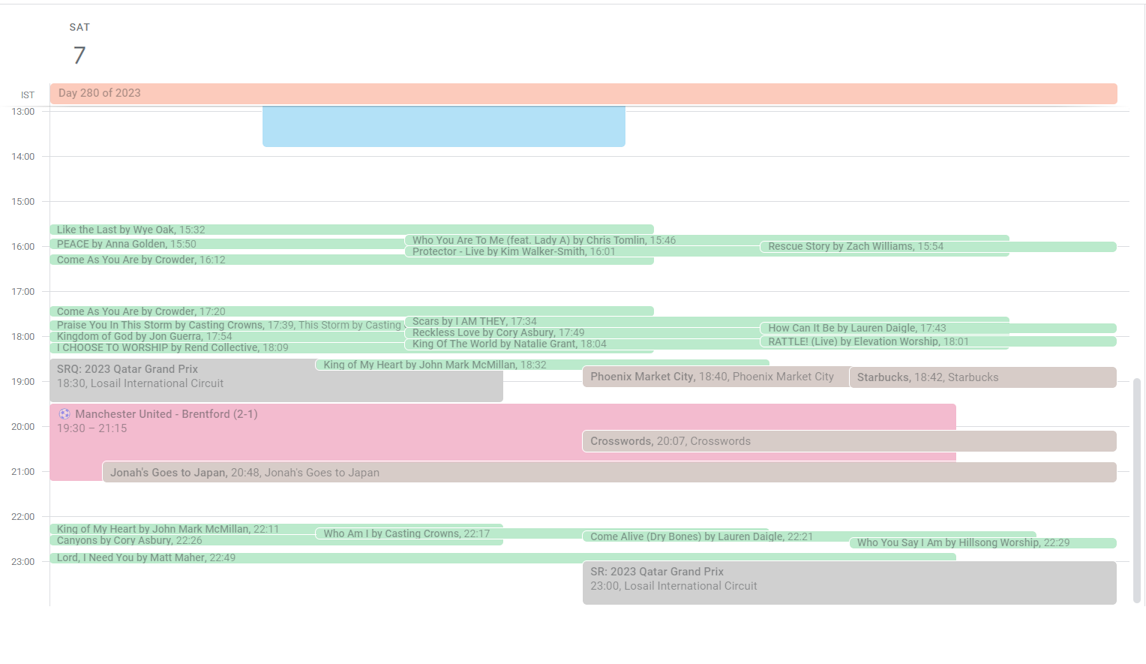I chanced upon Julian Lehr’s Multi-layered calendars last month and his idea of calendars as a time machine intrigued me.
Once you start to see the calendar as a time machine that covers more than just future plans, you’ll realize that almost any activity could live in your calendar. As long as it has a time dimension, it can be visualized as a native calendar layer.
The layering of past and future events upon one another made sense to me as a quantified-self idea. And I am already doing this, 🏆
I maintain a separate Reading Log calendar for the books I read, a Watch Log calendar for the TV shows and movies I watch, and even a Wellness calendar where I track my sleep data.

Adding these layers isn’t that hard with no-code tools like Zapier & IFTTT that can pull in data from other apps via RSS or APIs integrations. My reading layer comes in via a Goodreads/Zapier workflow. The TV shows (via Trakt) and movie data (via Letterboxd) again use Zapier for pulling in data via RSS feeds/APIs. The sleep data gets pushed via a Fitbit/IFTTT workflow.

Julian mentions the possibility of adding layers from other apps, such as a Spotify layer for music or a Strava layer for exercise tracking.
Adding a music listening layer (via Spotify) intrigued me, so I went ahead and added it. It turned out to be a high signal-to-noise layer, mainly because I listen to music throughout the day.

An interesting notion was mapping stress levels onto a calendar. Are some meetings high-stress events for me? 😀 I imagine Fitbit would allow retrieving a heart rate/stress snapshot every 15m or 30m. This data can be integrated into the calendar. [Note to self: Add this to next hacking project. 💡]
While some layers, such as music listening or sports data, may not provide obvious value, they enable us to navigate time in both forward and backward directions, as well as through overlapping layers. As Julian aptly put it, “It allows us to shape the future by studying the past”.
T.S. Eliot in Burnt Notion
Time present and time past
Are both perhaps present in time future,
And time future contained in time past.
What other uses can a layered calendar help with?